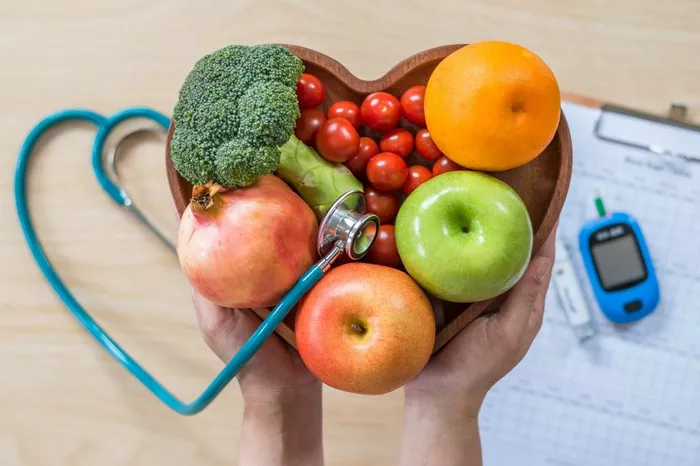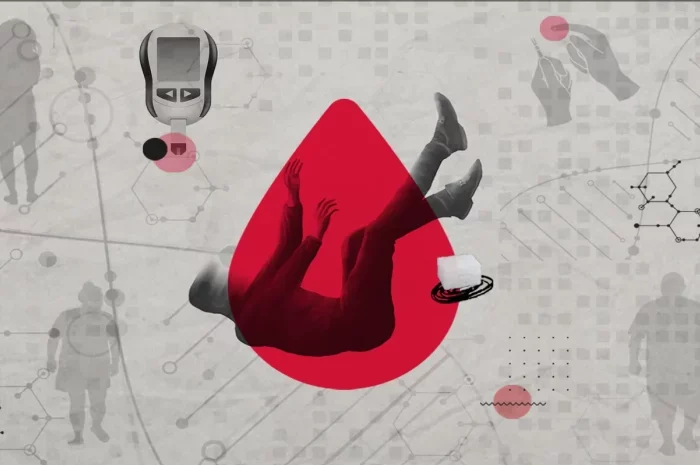Managing diabetes is a lifelong commitment that involves not only monitoring blood sugar levels but also making strategic dietary choices. The foods you consume play a crucial role in managing your blood glucose levels, and understanding what to eat and avoid is key to maintaining optimal health. This article provides a comprehensive guide for diabetics, detailing the best food choices and those that should be avoided to help manage the condition effectively.
Understanding Diabetes and Its Impact on Diet
Diabetes is a chronic condition characterized by elevated blood glucose levels. There are three main types of diabetes: Type 1, Type 2, and gestational diabetes. Regardless of the type, the goal of managing diabetes remains consistent: to maintain blood sugar levels within a healthy range. Diet plays a critical role in achieving this balance, as different foods can have varying effects on blood sugar levels.
Carbohydrates, proteins, and fats are the three macronutrients that make up the bulk of our diet. Carbohydrates have the most significant impact on blood sugar levels because they are broken down into glucose during digestion. Therefore, managing carbohydrate intake is essential for diabetics. However, it’s not just about reducing carbs; it’s also about choosing the right types of carbs, as well as paying attention to proteins, fats, and fiber.
Foods Diabetics Should Eat
1. Non-Starchy Vegetables
Non-starchy vegetables are a cornerstone of a diabetic diet. These include leafy greens, broccoli, cauliflower, peppers, and zucchini. They are low in calories and carbohydrates, making them an excellent choice for blood sugar control. These vegetables are also rich in fiber, vitamins, and minerals, which are essential for overall health.
Examples: Spinach, kale, cucumbers, tomatoes, Brussels sprouts, asparagus.
2. Whole Grains
Whole grains are a better option than refined grains because they contain more fiber, which helps slow down the absorption of glucose into the bloodstream. This results in a more gradual rise in blood sugar levels.
Examples: Quinoa, brown rice, barley, oatmeal, whole wheat.
3. Lean Proteins
Protein is essential for muscle repair and overall health. Including lean proteins in your diet can help you feel full longer and prevent overeating, which is beneficial for blood sugar control.
Examples: Chicken, turkey, tofu, fish, eggs, legumes.
4. Healthy Fats
Not all fats are created equal. Healthy fats, particularly those rich in omega-3 fatty acids, can help reduce inflammation and improve heart health, which is crucial for diabetics as they are at higher risk for cardiovascular disease.
Examples: Avocados, nuts, seeds, olive oil, fatty fish like salmon and mackerel.
5. Berries and Fruits with Low Glycemic Index
Fruits can be tricky for diabetics due to their natural sugar content, but some fruits have a lower glycemic index (GI) and are better choices. Berries, in particular, are high in fiber and antioxidants, making them a great option.
Examples: Strawberries, blueberries, raspberries, apples, pears.
6. Legumes
Legumes are high in fiber and protein and have a low GI, making them an excellent food choice for diabetics. They help regulate blood sugar levels and keep you full for longer.
Examples: Lentils, chickpeas, black beans, kidney beans.
7. Low-Fat Dairy
Dairy products can be part of a healthy diabetic diet when chosen wisely. Opt for low-fat or fat-free options to reduce calorie and saturated fat intake.
Examples: Greek yogurt, cottage cheese, skim milk.
8. Nuts and Seeds
Nuts and seeds are rich in healthy fats, protein, and fiber. They can help improve blood sugar control and reduce the risk of heart disease. However, they are also high in calories, so portion control is essential.
Examples: Almonds, walnuts, chia seeds, flaxseeds.
9. Herbal Teas and Coffee (in moderation)
Unsweetened herbal teas and black coffee can be beneficial in moderation. These beverages can provide antioxidants without adding extra calories or sugar to your diet. However, be mindful of how much caffeine you consume, as too much can affect blood sugar levels.
Examples: Green tea, chamomile tea, black coffee.
10. Water
Staying hydrated is crucial for everyone, especially for diabetics. Water is the best choice because it doesn’t raise blood sugar levels and helps the body remove excess glucose through urine.
Tip: Aim for at least eight glasses of water a day. You can also flavor your water with a slice of lemon, lime, or cucumber for a refreshing twist.
Foods Diabetics Should Avoid
1. Sugary Beverages
Sugary drinks are the worst choice for diabetics. They are loaded with sugar and provide little to no nutritional value. These drinks can cause a rapid spike in blood sugar levels, making them highly dangerous for diabetics.
Examples: Soda, fruit juices, sweetened iced tea, energy drinks, flavored coffees.
2. Trans Fats
Trans fats are harmful for everyone, but especially for diabetics. These fats can increase inflammation, insulin resistance, and the risk of heart disease. They are often found in processed foods.
Examples: Margarine, fried foods, baked goods, processed snacks, fast food.
3. Refined Carbohydrates
Refined carbohydrates are stripped of their fiber and nutrients, leading to rapid digestion and a quick spike in blood sugar levels. These should be avoided as much as possible.
Examples: White bread, white rice, pasta, pastries, cereals with added sugar.
4. Full-Fat Dairy
Full-fat dairy products are high in saturated fats, which can raise cholesterol levels and increase the risk of heart disease. Diabetics should opt for low-fat or fat-free alternatives.
Examples: Whole milk, cream, full-fat cheese, butter.
5. Sweets and Desserts
Sweets and desserts are loaded with sugar and unhealthy fats, leading to sharp increases in blood sugar levels. They should be limited or avoided altogether.
Examples: Cakes, cookies, candies, ice cream, doughnuts.
6. Processed Meats
Processed meats are high in sodium and unhealthy fats, which can increase the risk of heart disease and insulin resistance. These should be avoided, especially for those with diabetes.
Examples: Bacon, sausage, hot dogs, deli meats, ham.
7. Alcoholic Beverages
Alcohol can be tricky for diabetics. While moderate consumption may be allowed, alcohol can lower blood sugar levels and interact with diabetes medications. It’s essential to monitor your blood sugar levels if you choose to drink alcohol.
Tip: If you drink, do so in moderation and always with food to prevent hypoglycemia.
8. High-Sodium Foods
High sodium intake can lead to high blood pressure, which is already a concern for diabetics. Processed foods and canned goods are often high in sodium, so it’s important to check labels and choose low-sodium options.
Examples: Canned soups, frozen meals, salty snacks, processed cheeses.
9. High-Glycemic Fruits
While fruits are generally healthy, some have a high glycemic index and can cause a rapid spike in blood sugar levels. These should be consumed in moderation or avoided.
Examples: Pineapple, watermelon, ripe bananas, dried fruits like raisins and dates.
10. Sugary Cereals
Many breakfast cereals marketed as healthy are actually loaded with sugar. These can cause a rapid increase in blood sugar levels and should be avoided.
Tip: Opt for whole-grain cereals with no added sugar, and pair them with a protein source to stabilize blood sugar levels.
Meal Planning Tips for Diabetics
Understanding what to eat and avoid is just the beginning. Effective meal planning is crucial for maintaining stable blood sugar levels throughout the day. Here are some tips:
1. Practice Portion Control
Even healthy foods can cause blood sugar spikes if consumed in large quantities. Practice portion control to avoid overeating. Using smaller plates and measuring your food can help you keep portions in check.
2. Balance Your Meals
Aim to include a balance of carbohydrates, proteins, and fats in each meal. This balance helps slow the absorption of glucose into the bloodstream, preventing spikes in blood sugar levels.
3. Monitor Carbohydrate Intake
Carbohydrates have the most significant impact on blood sugar levels, so it’s essential to monitor your intake. Work with a dietitian to determine the right amount of carbs for your individual needs.
4. Eat Regularly
Skipping meals can cause blood sugar levels to fluctuate dramatically. Aim to eat at regular intervals throughout the day to keep your blood sugar stable.
5. Snack Smart
If you need a snack between meals, choose options that are low in carbohydrates and high in protein or fiber. Nuts, seeds, and low-fat yogurt are excellent choices.
6. Stay Hydrated
Drinking plenty of water is essential for overall health and can help prevent dehydration, which can affect blood sugar levels. Avoid sugary drinks and opt for water, herbal teas, or black coffee.
7. Read Food Labels
Reading food labels is crucial for diabetics. Look for hidden sugars, unhealthy fats, and high sodium content in processed foods. Choose products with whole, natural ingredients whenever possible.
8. Keep a Food Diary
Keeping a food diary can help you track what you eat and how it affects your blood sugar levels. This can be a valuable tool for identifying foods that cause spikes or drops in blood sugar.
9. Limit Dining Out
Dining out can be challenging for diabetics due to the lack of control over ingredients and portion sizes. When you do eat out, choose grilled options, ask for dressings and sauces on the side, and avoid fried foods.
10. Consult a Dietitian
Working with a registered dietitian who specializes in diabetes can help you create a personalized meal plan that meets your nutritional needs while managing your blood sugar levels.
See also: What Are The Worst Foods For Diabetics To Eat
Conclusion
Managing diabetes requires a comprehensive approach that includes careful dietary choices. By focusing on whole, nutrient-dense foods and avoiding those that can cause blood sugar spikes, diabetics can maintain better control of their condition and improve their overall health. Remember, it’s not just about what you eat, but how much and how often you eat that matters. With careful planning and the right food choices, living with diabetes can be manageable and even enjoyable.
Related topics:
Should Diabetics Do the Keto Diet?



























